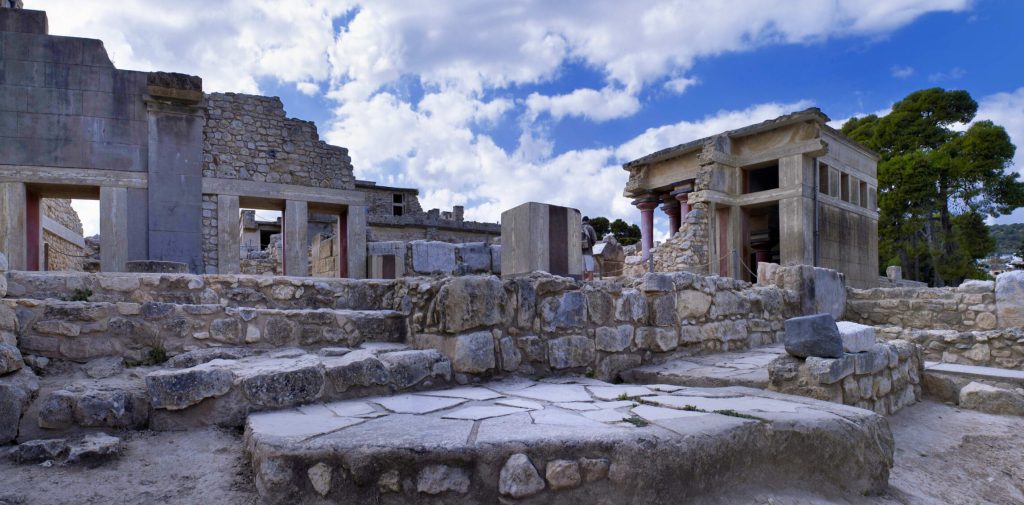Knossos is the most important archaeological site of the Minoan civilization and culture. Located 5 km south of Heraklion, it was the centre of the Minoan Crete.
The merchant Minoas Kalokairinos was the first person to discover Knossos. In 1900 A. Evans begun systematic excavation work which continued until 1931 and revealed the palace which occupied a large part of the Minoan city and of the cemeteries. Since then, excavations in the wider Knossos area continue to be conducted by the British Archaeological School together with the KG Ephorate of Prehistoric and Classical Antiquities.
Knossos had been thriving for approximately 2000 years. It comprises large palace buildings, extensive workshop installations and luxurious rock-cut chamber tombs. As a major centre of financial and commercial activity, Knossos maintained ties with almost all cities of the Eastern Mediterranean region.
Knossos Palace was the largest and most important centre of power in the Minoan age. It is a building complex occupying a surface area of 22,000 sq. m. It was the most impressive of the Minoan Palaces of Phaistos, Malia and Zakros, located atop a largely artificial hill. According to tradition, Knossos Palace was the seat of the King of Crete, Minos.
The first palace was built around 2000 BC at the southernmost point of the city but it was then destroyed around 1900 BC by an earthquake. Shortly after, it was restored to be destroyed again around 1700 BC due to another earthquake. Generally speaking, straight corridors were not included in the palace’s drawings. All this information together with its complicated architecture gave rise to the myth of the Labyrinth of Minos (Labyrinth of Crete). Soon after, during the middle decades of 15th century, the new palace was built which was a really magnificent complex. The Achaeans ascended the throne and ruled over the whole island (Post-Minoan IIIA period). Once more the palace was destroyed by a fire during the middle decades of the 14th century and in the years to follow it could no longer operate as a palace.
Nowadays, visitors will have the chance to visit not only the Minoan Palace but also to witness some private residencies featuring rich interior fresco decoration, as well as public buildings and religious centers.
At Knossos, the Minoan art reflects the cultural heyday of the city. The remarkable murals adorning the walls of the palace are some of the few paintings which remain intact up to the present and are typical examples of the Greek painting. The art of pottery and pottery painting are also of special interest, as well as the art of goldsmithing and the Minoan glyptic art through which the Minoan artists expressed their love for miniatures in a real delicate manner.
There is also a Roman private residence surrounded by colonnades. It dates back to the period of the Roman Empire and features remarkable mosaic floors.



